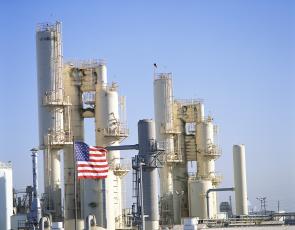As the 2016 presidential election cycle heats up, a lot of the candidates are talking about how to revitalize the middle-class. Such a focus is welcome and overdue. The American middle-class has certainly been shrinking, with the disparity in wealth simultaneously increasing, for a few decades - and this phenomenon has accelerated over the last six years.
The realization that a rising tide lifts all boats is what has made democratic capitalism the most effective mechanism for improving the human condition – on all counts – over the last two hundred years. A failure of our system to deliver on that promise is a significant risk to America’s economy and upward mobility across the globe. Unfortunately, despite a lot of good rhetoric, many of the alleged “solutions” to this issue are rooted in its causes: restricting consumer choice and adding more Washington red tape, particularly in relation to energy policies. A look at state policies in relation to energy highlight this fact.
More Energy Regulation = Less Economic Mobility and Economic Growth
Energy is the lifeblood of our economy and, as written in a previous post, abundant and affordable energy has been coupled with greater economic growth and upward mobility throughout history. In the Summer of 2014, the Pacific Research Institute (PRI) compared the regulatory environments surrounding energy consumption and use through its 50 State Index of Energy Regulation. As PRI notes:
The 50 State Index of Energy Regulation captures the variation in the regulatory environment for energy consumption, production, and distribution across states. The goal is to indicate the relative degree of difficulty for consuming energy and operating energy-related businesses in one state compared with another.
The executive summary highlights what history has proven true: states with more cumbersome regulations that hamper efficiency (“low ranked” states) grow slower than states that embrace a less cumbersome, more efficient approach (“high ranked” states). As the report accompanying the index states:
High ranked states on average grow faster than those ranked low. Moreover, the higher rate of economic growth is associated with faster employment growth. Energy regulation can, therefore, be an important factor in determining the prosperity of a state.
PRI goes into this in more depth both in its report and in a previous Petro Primer blog post, but in short, states with more cumbersome, choice restricting regulations have higher energy costs, reducing a state’s economic potential. A closer look at one of the states with the most regulation reveals these higher consumer costs are not only associated with lower overall economic growth but also end up leading to larger disparities of wealth.
This blog is part one of a two-part series on free-market energy policies. The second installment will be posted on Petro Primer this Friday.

